Story highlights
The Netherland's second-largest city is enjoying a new, hip vibe
Residents have voted and crowdfunded some new city developments
Art and museum lovers are spoiled for choice here
Rotterdam – the Netherlands’ second largest city and Europe’s biggest port – is currently enjoying its transformation from a city plagued with urban problems to a hip place to visit or live.
Long lost in the shadow of Amsterdam, crowdfunding initiatives and striking new architecture have helped boost Rotterdam’s vibe and image recently.
Some are now asking, does the city of 630,000 people from 170 nationalities have the credentials to be considered Europe’s new capital of cool?
Here are a handful of reasons to visit Rotterdam now.
There are free outdoor art galleries
Art fans don’t need to enter a museum to view art in Rotterdam.
Stroll around the city and giant sculptures are in eyesight.
Pablo Picasso’s 46 ton “Sylvette” sits at the intersection of Museumpark and Westersingel, forming part of a sculpture route that runs alongside Rotterdam’s Westersingel canal.
Auguste Rodin’s “L’homme qui marche,” a headless, armless sculpture of a walking man, returns in March after being loaned for display in Wuppertal, Germany.
Sculpture International Rotterdam curates the Westersingel Sculpture Route and public artworks dotted around Rotterdam.
It’s got a mind-blowing market hall
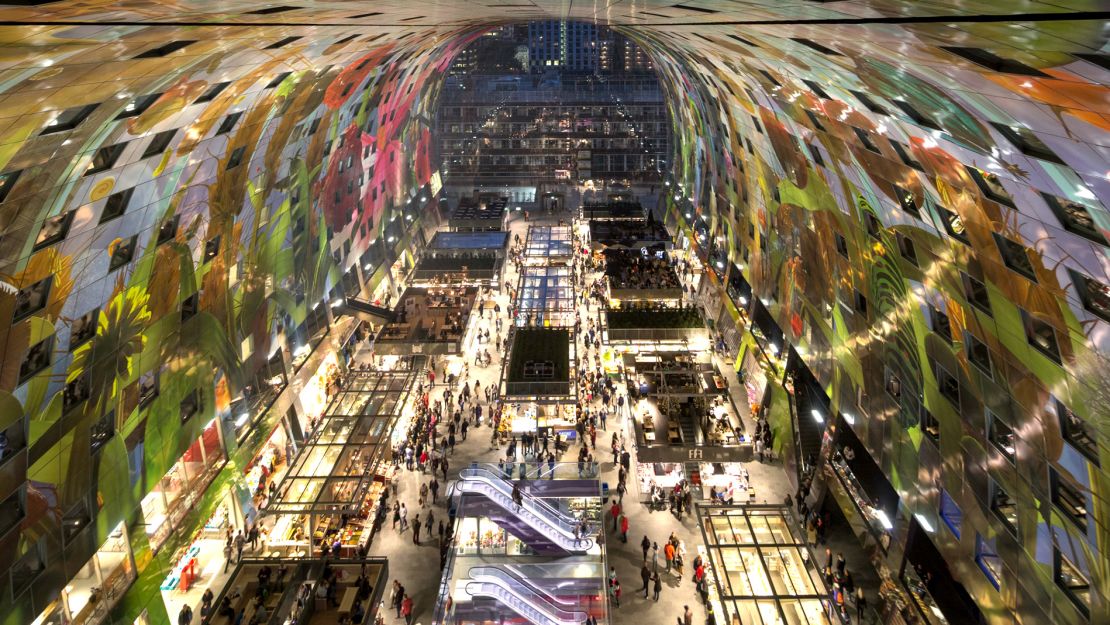
Rotterdam opened the Markthal, a covered market hall and apartment complex in October 2014, giving the city a radical landmark to draw visitors.
Apartments arch above 96 stalls selling everything from Dutch cheeses to fresh fish, and many other local food and drinks.
The ceiling of the Markthal bears the world’s largest artwork.
Spanning over 13,000 square yards, the “Horn of Plenty” by Arno Coenen is a colorful art piece depicting fruit tumbling from a summer sky, grazing cows and flowers.
The artwork’s panels help lower sound within the market hall.
Markthal Rotterdam; 298 Ds. Jan Scharpstraat, Rotterdam
And the best new cocktail bar in the Netherlands
Cocktail-lovers should head straight to Stirr, which was named the Netherlands’ best new cocktail bar in the 2016 Esquire awards.
Mustachioed mixologists stand ready to create drinks tailored to any tastes.
They utilize the venue’s own liqueurs, bitters and syrups.
With exposed brickwork and hip hop music, Stirr offers a new scene in a city where dockworkers and industrial workforce have traditionally favored beer over cocktails.
Stirr, 29b Eendrachtweg, Rotterdam
There’s a district that’s actually called Cool District
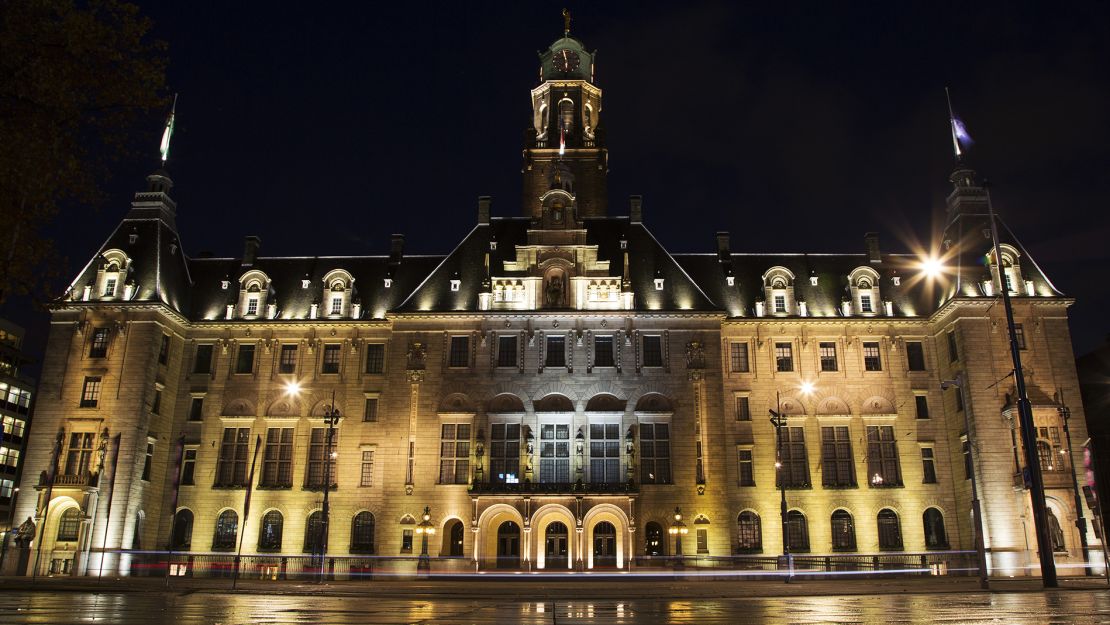
Many cities have quarters that are widely regarded as cool but Rotterdam can claim, literally, to have a Cool District.
Pronounced ‘coal’ in Dutch, the district was a separate municipality to Rotterdam until 1816, and is now peppered with high street stores and restaurants.
Plans are afoot to redevelop “Coolsingel”, the broad street that runs in front of Rotterdam’s city hall, by 2020.
Traffic flow will be reduced, and pedestrians and cyclists will have more space when the project is complete.
Its citizens want to surf
In recent years, Rotterdam has asked its citizens to help change the city.
Residents have suggested projects to receive funding, then had a vote to choose the most popular.
One scheme, proposing an area for urban surfing at Steigersgracht, next to the Markthal, hit legal challenges but looks set to open in 2017.
The Luchtsingel, a 1,280 foot long pedestrian bridge linking the central station with Rotterdam’s northern district, opened in 2015.
Crowdfunding, sourced by inscribing names on the bridge’s wooden planks in return for a donation, helped raise revenue to construct the yellow Luchtsingel.
Luchtsingel, 189 Schiekade, Rotterdam
It’s got accessible nightlife
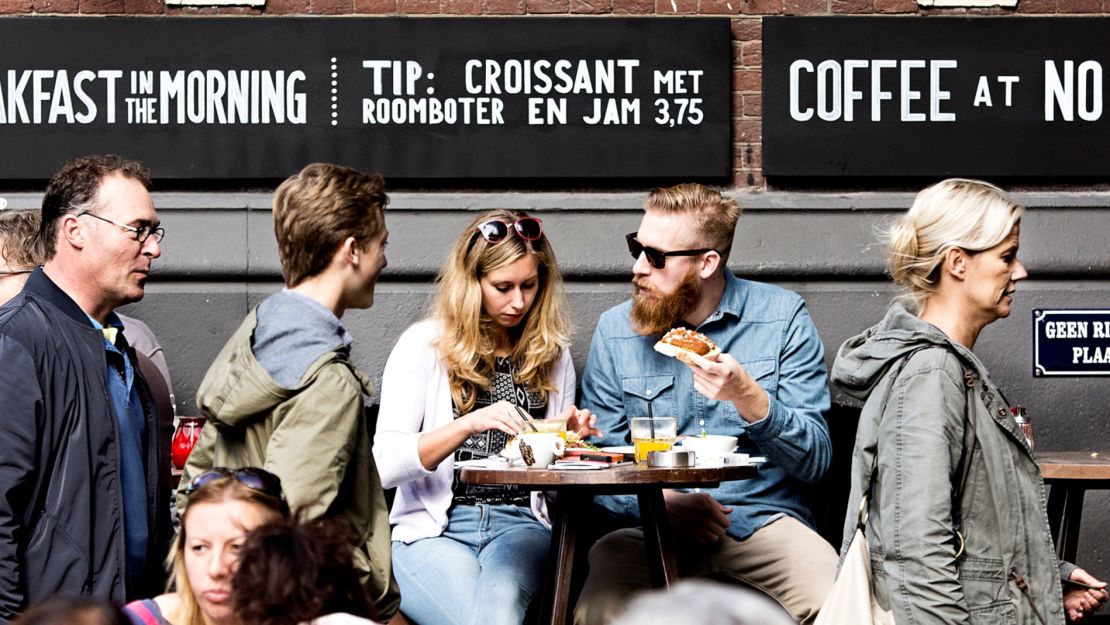
A number of bars, cafes, and restaurants operate on Witte de Withstraat, the buzzing street at the heart of Rotterdam’s nightlife scene.
A smattering of art boutiques, including Gallerie Ecce and Gallerie van Eijck, give the area cultural credentials.
If the weather’s nice, seats are set out on the sidewalk in front of bars such as De Witte Aap.
Ballroom – named after bitterballen, a traditional, deep fried Dutch snack – makes unconfirmed claims to having the world’s widest selection of gin and tonics.
Ballroom; 88b Witte de Withstraat, Rotterdam; +3110 341 2029
There’s interesting stuff happening with mushrooms
Folks in Rotterdam don’t just talk about cutting back on their carbon footprint, they do something about it.
Sometimes, that something is a little unusual.
Like the team from RotterZwam, which grows oyster mushrooms using coffee grinds from cafés around the city center as fertilizer.
So far, RotterZwam has salvaged in excess of 35 tons of used coffee and produced more than 4 tons of mushrooms, which are sold and served in restaurants around the city.
RotterZwam, 100 Maasboulevard, Rotterdam
The old red light district is being transformed

The Fenix Food Factory occupies a former warehouse in the city’s Katendrecht district.
Here, young entrepreneurs sell locally sourced food and drinks, while helping to transform what was long a rundown, red light district.
Visitors can sit in a communal area at the center of the building or on seats overlooking the waterfront.
The Kaapse Brouwers brewpub hosts live jazz sessions on Fridays and Sundays.
Fenix Food Factory, 19d Verlaan, Rotterdam
Everyone’s growing vegetables
At a time when many urban youth are clueless about where food comes from, Uit Je Eigen Stad gives young people in Rotterdam a chance to try their hand at farming.
The initiative, whose name means “from your own city,” is based on a formerly rundown dockland in the city’s western suburbs.
Vegetables harvested from the urban farm are served in at the on-site restaurant, and a café/shop at Rotterdam’s central train station (24ab Proveniersplein).
City rooftops are also being used to grow fruit and vegetables, in environmentally conscious efforts to reduce food transport.
Uit Je Eigen Stad, Marconistraat 39, Rotterdam; +31 10 820 8909
The architecture floats
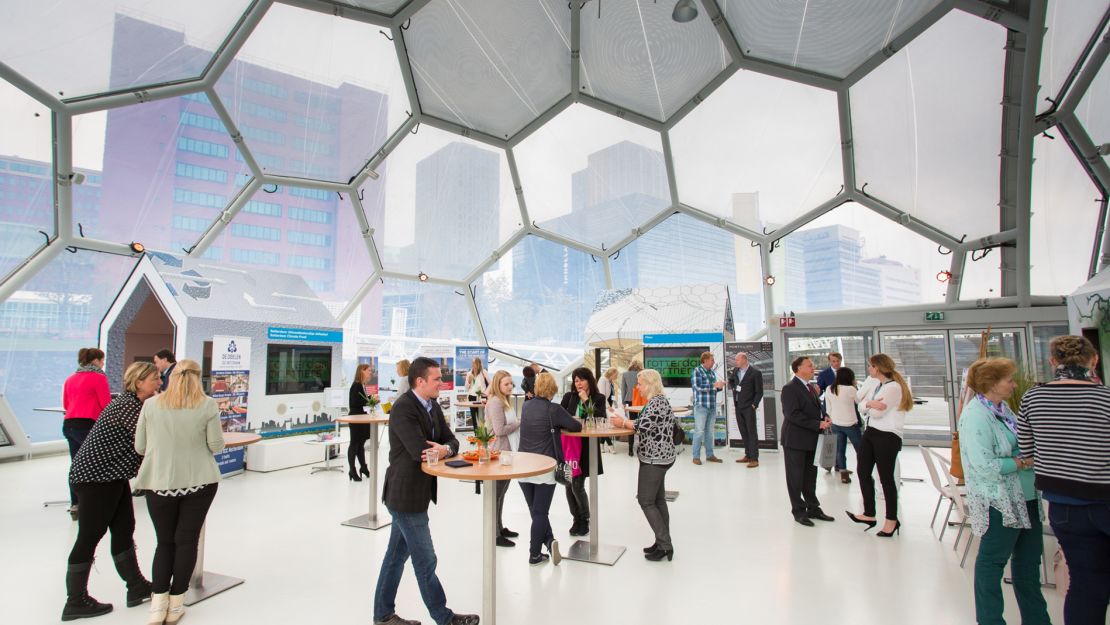
Rotterdam-based architects are developing plans for floating houses to help maximize living space in a city with vast areas of water.
A Floating Pavilion is already used to host events at the Rijnhaven, on the south side of the city’s Nieuwe Maas River.
Cows will soon be milked on the Floating Farm, which is scheduled to open in Rotterdam during 2017.
Peter van Wingerden, the architect of the self-sustaining dairy platform, believes floating farms may be a way for the cities of the future to feed their growing populations and reduce pressure on land.
Floating Pavilion, 90 Posthumalaan, Rotterdam
It’s always loved innovative buildings
Some say Rotterdam embraces contemporary architecture because so many of its historic sites were destroyed during a German air raid on May 14, 1940.
Yet even before World War II, Rotterdam saw the construction of new buildings, such as the Sonneveld House, a Modernist family home from the 1930s.
The Witte Huis, an Art Nouveau-influenced highrise which now hosts a café, was completed in 1898, and is regarded as a proto-skyscraper.
The World Port Center, designed by Foster and Partners, and the KPN Telekom Building by Renzo Piano, are two of the city’s celebrated skyscrapers.
De Rotterdam, designed by Rem Koolhaas, is conceptualized as a vertical city and is the largest building in the Netherlands.
Museums are everywhere
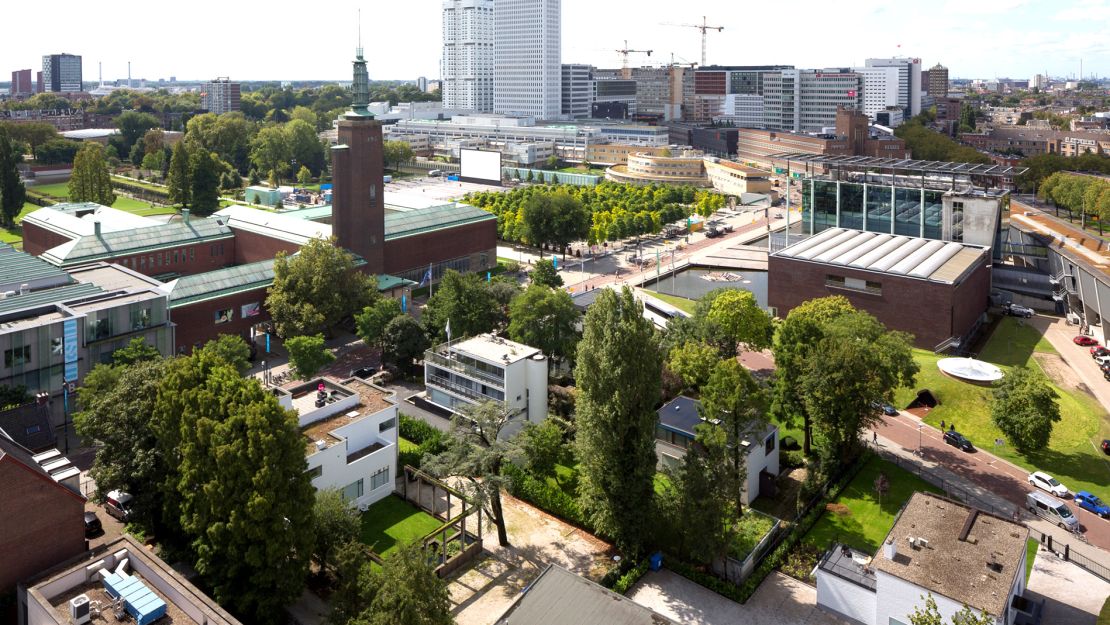
Rotterdam’s Museum Park has wide open green spaces to take advantage of sunny weather.
Around it there’s both the Natural History Museum and Kunsthal, which hosts regularly changing art exhibitions.
The Museum Boijmans Van Beuningen displays world class artworks, by the likes of Piet Mondrian and Vincent van Gogh, plus the applied designs of Gerrit Rietveld.
Het Nieuwe Instituut is the place to go for design-related exhibitions, and hosts the Dutch state archive on architecture.
Het Nieuwe Instituut, 25 Museumpark, Rotterdam
Even its disused factories are cool
Completed in 1931, the Van Nelle Factory was built to process and package tea, coffee and tobacco.
Over the course of six years, each aspect of the design was carefully considered by the Functionalist architects Johannes Brinkmann and Leendert van der Vlugt.
In 2014 UNESCO inscribed the factory, which is now used for office space, as a world heritage site.
Fans of architecture can join Urban Guides for tours of the ingeniously designed building.
Van Nelle Factory, 1 Van Nelleweg, Rotterdam
Stuart Forster is a UK-based travel writer and photographer. He was named Journalist of the Year at the Holland Press Awards of 2015 and 2016.















